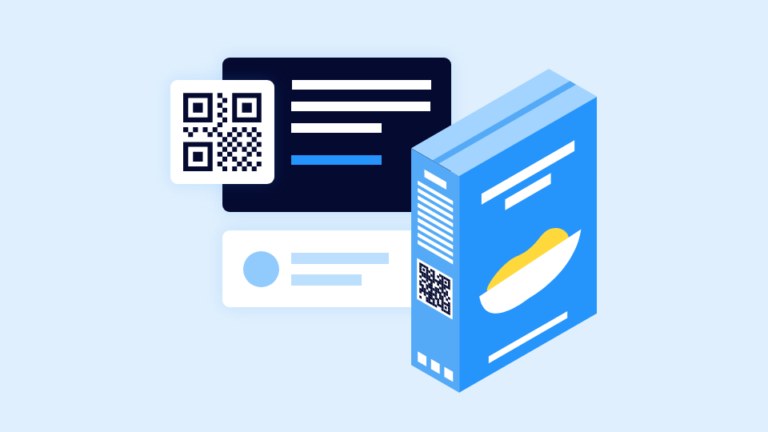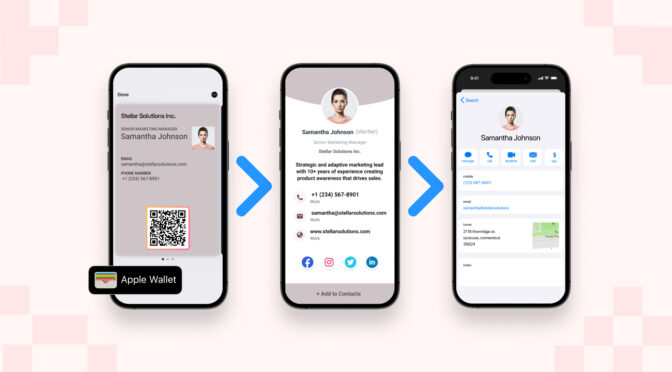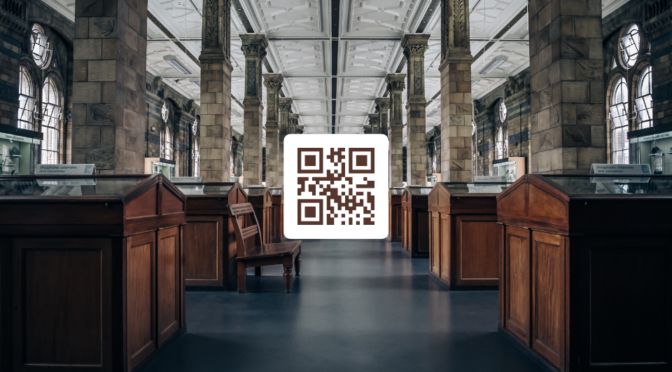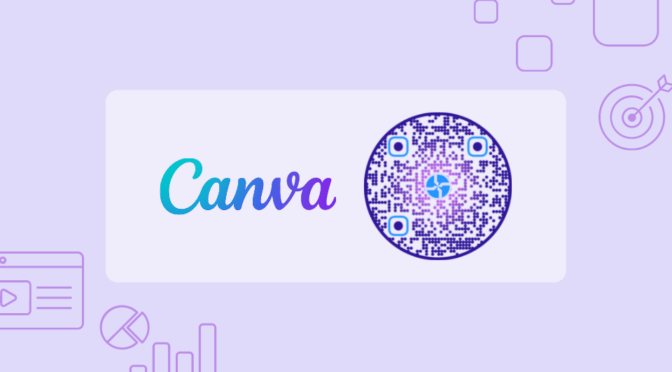QR Codes are useful to share relevant information with consumers to reinforce trust, improve brand reputation, and foster long-term brand loyalty. Check out this insightful article to using QR Codes on product packaging to establish transparency for your CPG brand.
The consumer packaged goods (CPG) industry is an ever-growing one with increasing demands as well as concerns from its consumers. There has been a need for more information about the products being manufactured and sold.
To cater to consumer needs, product packaging can be utilized as a significant medium through which CPG brands can achieve product transparency. The use of transparent packaging can help companies build a higher level of trust with their consumers and improve customer satisfaction and loyalty.
With the rise of QR Code technology and its ability to share ample information to consumers, QR Codes used on product packaging create an effective solution that can aid CPG brands in attaining brand transparency.
Table of contents
- 4 reasons why CPG brands use QR Codes on packaging
- 6 ways CPG brands can achieve transparency using QR Codes on product packaging
4 reasons why CPG brands use QR Codes on packaging
From meeting evolving customer needs to regulatory requirements, QR Codes have become a multi-functional element in consumer goods packaging.
#1. Growing consumer concerns
Consumers these days have growing concerns regarding the authenticity and safety of the products they purchase. They require access to product information that will prove the same.
A study by Edelmen in 2024 shows that consumers look to brands for safety, honesty and clear product information. Brand trust is now a critical factor in consumer decisions. This demonstrates consumers’ increasing expectation that brands must prove authenticity and safety to earn confidence.
Is it safe?
Were any animals harmed in the making?
Where is it sourced from?
Is it organic?
Is it gluten-free?
Customers want to delve deeper into the origin of a product before deciding to purchase it. From the product’s manufacture to its point of sale, CPG companies that provide this essential and in-demand information can ease consumers’ concerns and influence their buying decisions for the better.
#2. Builds trustworthy customer relationships
Establishing transparency through product packaging can build a great sense of trust among consumers. It also promotes customer engagement and can cause more interactions to flow between the brand and the consumer.
Consumers who trust a brand or manufacturer are highly likely to stick with them in the long run and recommend the said brand to a friend or family member. And QR Codes helps to bridge the gap between consumers and brands, long after the product leaves the shelf.
Brand transparency can help foster loyalty, improve brand advocacy, and drive more referrals and recommendations. Ultimately, this can improve your brand.
#3. Fast-tracks growth and revenue
CPG brands that are transparent with product information influence consumers to make repeated purchases. Repeated purchases lead to higher demand and long-term loyalty, which are the defining factors for success in the CPG industry.
A 2024 study by NielsenIQ reports an increase in shoppers saying transparent product information is important (growing from ~69% in 2018 to ~76% in 2023) and links this to purchasing choices. This shows that trust and perceived honesty are strongly linked to purchase decisions and ongoing brand support.
#4. Meeting regulatory requirements
Transparency is no longer optional for CPG brands—it’s expected. QR Codes offer a practical way to meet new regulatory demands and deliver clearer supply chain insights to regulators, partners, and consumers.
With the FDA encouraging scannable labels to modernize certificate checks and improve food traceability, brands can replace time-consuming manual steps with instant digital verification. Early adopters in the CPG space are already gaining an edge, proving that proactive compliance can also be a competitive advantage.
6 ways CPG brands can achieve transparency using QR Codes on product packaging
#1. QR Codes to display nutritional information, ingredients, and allergens

Consumers are always on the lookout for the healthiest product out there, and also one that doesn’t trigger their allergies.
So, it’s best to embed QR Codes on the product packaging that displays the nutritional value, the allergens contained, and the ingredients used. This additional information can majorly help consumers make quick purchase decisions and also prevent health risks.
#2. QR Codes to share product safety information & disclosures

Brand transparency can also be achieved by communicating information about product safety, such as cautionary instructions (for example, wearing safety goggles during use, keeping drill bits sharp) and certifications that the product has been tested and evaluated.
Dynamic QR Codes can display the product’s date of manufacture to prove its quality and mention its expiration date (if it’s a perishable product) to inform consumers about its shelf life. Providing this information can significantly increase brand reliability and revenue.
#3. QR Codes to achieve supply chain transparency

As a CPG brand, besides providing information about the product and its contents, it’s also a great practice to go beyond the product.
Have QR Codes available on the packaging that direct consumers to detailed information such as where the product materials or ingredients are sourced from, the supply chain process followed, the factory or farm locations, how fairly the employees are treated, and additional information about the suppliers.
Providing this level of supply chain transparency through your products can increase your brand’s credibility and prove its quality to consumers, increasing sales on a larger scale.
For example, according to an article by Dairy Foods, Midwest Dairy uses dynamic QR Codes on its packaging to link consumers to on-farm information, animal care, and other relevant information. Since the QR Codes are dynamic, they can modify the information as and when needed, without the hassle of reprinting and redistribution.
Read More: Top 10 CPG Brands QR Code Campaigns
#4. QR Codes to share the sustainability story behind the product

Another way to drive product transparency and credibility is to use QR Codes to direct consumers to the sustainability story behind its existence.
What was the purpose or the driving factor that inspired your business to manufacture this product? Sharing this sort of information can help your brand connect with its target audience, increase the flow of interactions, and drive more sales.
For instance, let’s say you own a business that sells products made from recycled materials, the reason being that you want to help save the environment and provide high-quality products that involve no amount of wastage.
By sharing your story via QR Codes on the product packaging, other environmentalists and potential consumers will be able to relate to your brand and will be prompted to make a purchase.
#5. QR Codes to display CoA on CBD products

In the CBD industry, the Certificate of Analysis (CoA) is a requirement set forth by state-wide regulations. It’s required that all CBD products must have labels that disclose the CoA and the ingredients used. This information is vital to consumers when making a purchase.
To establish brand transparency, earn consumers’ trust, and promote stress-free buying decisions, print QR Codes on CBD product packaging such as oils and makeup products to display all the information that consumers need to know.
Information such as the ingredients used, the side effects, the date of expiry, the concentration of CBD used in the product, and most importantly, the Certificate of Analysis (CoA) are necessary to consumers.
This can potentially elevate your CBD brand’s customer experience. Due to the established trust, it can lead to repeated purchases and brand advocacy.
For example, Maesa, a CBD cosmetic brand, achieves transparency with the use of Uniqode’s QR Codes on their product packaging to direct customers to detailed product information, tutorials, and the Certificate of Analysis.
#6. QR Codes to display information about product sustainability

Information about product sustainability is another driving force that can help with brand transparency, influence positive buying decisions, and improve your CPG brand’s overall reputation.
According to Statista, 36% of consumers look for information about the social, health, environmental, and safety impact of the products they buy on the product labels.
Use QR Codes on your packaging to communicate the eco-friendly processes your brand follows during manufacture. Include details such as the recyclable materials used and how consumers can reuse and recycle the packaging. This will not only promote sales but also drive zero wastage to aid the environment.
For example, Lush, a UK-based brand that creates fresh handmade cosmetics, had launched their Lush Labs mobile application at the South By Southwest trade show in Austin, Texas. Guests could easily download the app with a swift scan of a QR Code.
They could use the app’s visual search feature to scan the unwrapped bath bombs and access information such as the ingredients, prices, and videos of how it’ll look when dropped in water.
Lush had developed this app to promote sustainability and incorporate waste-reduction initiatives into their company strategy. Due to this app’s presence and the information it provides, the company states that it can save water since they doesn’t require in-store demonstrations of its bath products.
We need QR Codes now more than ever before
Since Google has announced that it will be phasing out the third-party cookie in 2022, this spells bad news for companies that heavily rely on third-party data to track and assess user behavior and interests and send targeted ads to their audiences.
Due to this, QR Code technology is crucial for CPG. The analytics provided by QR Codes can significantly help businesses access browser information, location, devices used, and so much more. Not to mention, it’s an agile and scalable technology that can be used in a plethora of use cases.
Uniqode works with the largest CPG brands in the world – Nestle, Pernod Ricard, INI Farms, Maesa and has a robust, secure, and scalable solution for brands that value data privacy and ease of use. The no-code platform allows you to have complete control over your QR Code campaigns and comes with access to a powerful analytics engine to boost your campaign’s ROI.
Shashank is a content marketer at Uniqode who turned to writing to pursue his natural calling after 2+ years of working in the product team. He aims to educate folks on the brilliant yet underrated technology of QR Codes. With more than a dozen Tofu and Mofu pieces under his belt, he explores how QR Codes can be used to solve challenges for businesses across all verticals. While he’s not educating users on the benefits of QR Codes, he’s also a student of the evolving marketing landscape.












